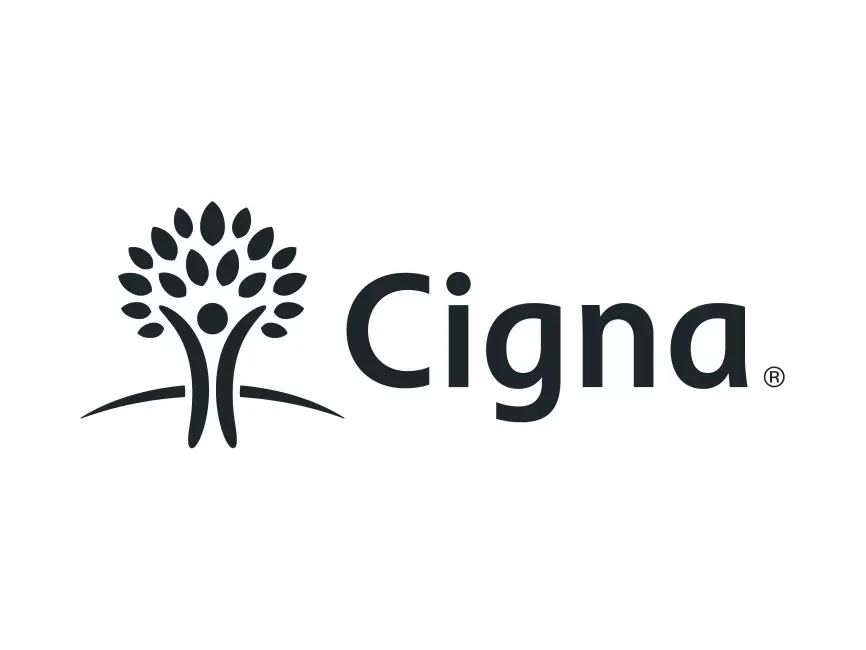Understanding Mindful Living
At its core, mindfulness is a simple yet profound concept: paying attention, on purpose, in the present moment, and non-judgmentally. Let’s break that down. “Paying attention” means consciously directing your focus rather than letting your mind wander uncontrollably. “On purpose” emphasizes that this is an intentional act, a skill you cultivate, not something that just happens. “In the present moment” is key; mindfulness brings you out of dwelling on the past or worrying about the future and grounds you in what is happening right now. Finally, “non-judgmentally” is perhaps one of the most challenging but crucial aspects. It means observing your thoughts, feelings, and experiences as they are, without labeling them as “good” or “bad,” “right” or “wrong.” It’s about acceptance and observation rather than evaluation and reaction.
Mindfulness is not about emptying your mind or achieving a state of perpetual calm. It’s about developing a new relationship with your thoughts and feelings. Instead of being swept away by them or trying to suppress them, you learn to observe them with a sense of curiosity and detachment. You recognize that thoughts are just thoughts – temporary mental events – and feelings are just feelings – temporary emotional states. This awareness creates space between you and your reactions, allowing you to respond to life’s challenges more skillfully rather than reacting impulsively.
The principles of mindfulness can be applied to any activity, from eating a meal to having a conversation to experiencing a difficult emotion. It’s about bringing a quality of awareness to everyday life. For someone in addiction recovery, this is incredibly beneficial. Addiction often thrives in unconsciousness, in states where individuals are numb to their feelings, disconnected from their bodies, and driven by automatic impulses. Mindfulness counters this by fostering awareness.
The benefits of mindfulness in addiction recovery are extensive and well-documented. One primary benefit is improved self-awareness. By practicing mindfulness, individuals become more attuned to their internal states – recognizing early warning signs of stress, anxiety, or emotional triggers that might precede a craving. This awareness allows them to intervene proactively rather than being caught off guard.
Another significant benefit is stress reduction. Chronic stress is a major relapse trigger. Mindfulness practices activate the body’s relaxation response, reducing levels of stress hormones like cortisol and promoting a sense of calm. Learning to manage stress in healthy ways is vital for maintaining sobriety.
Mindfulness also helps in managing cravings. Cravings are intense thoughts and urges that can feel overwhelming. Mindfulness doesn’t make cravings disappear, but it changes how you experience them. Instead of being consumed by the craving, you learn to observe it – noticing the physical sensations, the thoughts associated with it, and understanding that it is a temporary state that will pass. This observational stance weakens the craving’s power and allows you to choose a different response.
Furthermore, mindfulness cultivates self-compassion. Many people in recovery carry significant guilt, shame, and self-criticism. Mindfulness encourages a gentle, accepting attitude towards oneself, acknowledging struggles and imperfections without harsh judgment. This self-compassion is essential for healing and building a positive self-image necessary for long-term recovery.
Finally, mindfulness enhances emotional regulation. Instead of being overwhelmed by difficult emotions like sadness, anger, or fear, you learn to experience them fully but without being controlled by them. You develop the capacity to tolerate discomfort and respond thoughtfully rather than reactively. This skill is invaluable for navigating the ups and downs of recovery.
Understanding these principles and benefits lays the groundwork for integrating mindfulness into daily life. It’s not a quick fix but a continuous practice that builds resilience, peace, and a stronger connection to your recovery journey. For those exploring
admissions into a program, knowing that therapies supporting these skills are available, even remotely, can be a source of hope and confidence. If you’re wondering about how treatment can help you develop these skills, you can always
check insurance coverage to see what support is available.
Daily Mindfulness Practices
Incorporating mindfulness into your daily life doesn’t require hours of silent meditation every day. It’s about finding small, consistent ways to bring awareness to your experiences. The key is regularity and patience. Here are several daily practices you can explore and integrate into your routine to support your ongoing recovery.
Meditation: Techniques and Benefits
Meditation is perhaps the most well-known mindfulness practice. It involves setting aside dedicated time to focus your attention, often on the breath, bodily sensations, or sounds, and gently redirecting your attention when your mind wanders. There are many types of meditation, but the core principle remains the same: cultivating focused awareness.
– Sitting Meditation: Find a comfortable seated position, either on a cushion on the floor or in a chair with your feet flat on the ground. Rest your hands comfortably. Close your eyes gently or soften your gaze. Bring your attention to your breath – the sensation of air entering and leaving your nostrils, the rise and fall of your abdomen or chest. Your mind will wander; that’s perfectly normal. When you notice your mind has strayed to thoughts, plans, or worries, simply acknowledge the thought without judgment and gently guide your attention back to your breath. Start with just 5-10 minutes a day and gradually increase the time as you feel comfortable.
– Walking Meditation: This practice combines mindful awareness with physical movement. Walk at a natural pace, perhaps outdoors in nature or even indoors. Bring your attention to the sensations of walking – the lifting and placing of each foot, the swing of your arms, the feeling of the ground beneath you. If your mind wanders, gently bring it back to the physical sensations of walking.
– Body Scan Meditation: This involves systematically bringing your attention to different parts of your body, noticing any sensations (tension, tingling, warmth, coolness) without trying to change them. Start at your toes and slowly move your awareness up through your feet, ankles, legs, torso, arms, hands, neck, and head. This helps you become more aware of physical tension and how emotions manifest in the body.
– Loving-Kindness Meditation (Metta): While not strictly a “focus” meditation, Metta cultivates feelings of warmth, compassion, and friendliness towards oneself and others. It involves silently repeating phrases like “May I be happy,” “May I be healthy,” “May I be free from suffering,” first directed towards yourself, then loved ones, neutral people, difficult people, and finally, all beings. This practice is particularly helpful for building self-compassion and reducing resentment, both crucial for recovery.
The benefits of regular meditation in recovery are immense. It trains your attention span, making it easier to focus on recovery tasks and less likely to get lost in negative thought loops or cravings. It significantly reduces stress and anxiety levels. It improves emotional regulation by helping you observe difficult feelings without being overwhelmed. Consistent meditation builds the capacity to pause before reacting, which is vital when faced with triggers or urges. Many participants in
Intensive Outpatient Programs (IOP) or even
Partial Hospitalization Programs (PHP) find that incorporating meditation alongside therapy and group work amplifies their progress.
Breathing Exercises: How to Incorporate Them into Daily Life
The breath is always with you, making it the perfect anchor for mindfulness in any moment. Simple breathing exercises can be powerful tools for calming the nervous system, grounding yourself, and managing immediate stress or cravings. You can do these anytime, anywhere – at your desk, in your car (when parked!), waiting in line, or feeling overwhelmed.
– Mindful Breathing (Anchor Breath): Simply bring your full attention to the physical sensation of breathing for a few moments. Notice the natural rhythm – the inhale, the pause, the exhale, the pause. Don’t try to change your breath, just observe it. This can be done for just one minute and instantly brings you into the present moment.
– 4-7-8 Breathing: Inhale quietly through your nose for a count of 4. Hold your breath for a count of 7. Exhale completely through your mouth, making a whooshing sound, for a count of 8. Repeat for four cycles. This technique is specifically designed to promote relaxation and calm the nervous system.
– Box Breathing (Square Breathing): Inhale slowly for a count of 4. Hold your breath for a count of 4. Exhale slowly for a count of 4. Hold your breath (lungs empty) for a count of 4. Repeat. This provides a simple, rhythmic structure to focus on.
Incorporating breathing exercises is easy. Set reminders on your phone to take three mindful breaths throughout the day. Use them as a transition between tasks. Practice them before stressful meetings or conversations. Use them when you feel a craving starting to build. Learning to use your breath as a tool for self-regulation is fundamental to
remote IOP and other recovery programs focused on coping skills. Online therapy sessions often teach these exact techniques.
Mindful Movement: Yoga and Walking Meditation
Mindfulness isn’t limited to sitting still. Moving your body with awareness can be a profoundly grounding and healing practice.
– Yoga: Yoga combines physical postures (asanas), breathing techniques (pranayama), and meditation. Practicing yoga mindfully involves paying attention to the sensations in your body as you move through poses, coordinating breath with movement, and noticing any thoughts or emotions that arise without judgment. Yoga can help release stored tension, improve body awareness (which is often disrupted in addiction), and cultivate a sense of strength and flexibility, both physically and mentally. Many recovery programs, including virtual rehab options, recognize the value of mindful movement and may incorporate guided sessions or recommend resources.
– Walking Meditation: As mentioned earlier, this is a simple yet powerful way to integrate mindfulness into an everyday activity. Instead of walking while lost in thought, bring your attention fully to the experience of walking. Notice the feeling of your feet hitting the ground, the rhythm of your steps, the swing of your arms, the movement of your body. Pay attention to your surroundings – the sights, sounds, and smells – without getting caught up in stories about them. Just observe. This can make a simple walk a moving meditation, a way to clear your head and connect with the present moment. Even a short 10-15 minute mindful walk can shift your state.
Mindful movement helps combat restlessness, provides a healthy outlet for energy or anxiety, and strengthens the mind-body connection, which is often fractured by addiction.
Journaling: Reflective Writing for Self-Awareness
Journaling is a powerful tool for processing thoughts and feelings, gaining perspective, and increasing self-awareness. Mindful journaling involves writing down your thoughts and feelings as they are, without censoring or judging yourself. It’s a space for honest self-exploration.
– Stream of Consciousness: Simply write whatever comes to mind for a set amount of time (e.g., 10-15 minutes) without stopping or editing. Don’t worry about grammar or structure. This can help uncover underlying thoughts and emotions.
– Prompt-Based Journaling: Use specific prompts to guide your writing. Examples include: “What emotions am I feeling right now?” “What physical sensations am I noticing?” “What thoughts are dominant today?” “What am I grateful for in this moment?” “How did I handle a challenging situation today?”
– Gratitude Journaling: Focus specifically on listing things you are grateful for (more on this below).
Journaling helps you externalize and examine your internal landscape. It can reveal patterns in your thinking, identify triggers, process difficult experiences, and track your progress in recovery. For those participating in
virtual IOP programs or engaging in
online CBT therapy, journaling can be a valuable complement, providing insights to discuss with your therapist. It fosters the self-reflection necessary for growth and change.
Gratitude Exercises: Cultivating a Positive Mindset
Cultivating gratitude involves consciously focusing on the good things in your life, no matter how small. This practice shifts your perspective from what’s lacking to what’s present, fostering a more positive and resilient mindset.
– Gratitude List: At the end of each day, list 3-5 things you are genuinely grateful for. These can be simple – a warm cup of coffee, a kind word from a friend, a sunny day, completing a recovery task, a moment of peace. Try to be specific.
– Gratitude Walk: As you take a walk, consciously notice things you are grateful for in your surroundings – the beauty of nature, the kindness of a stranger, the feeling of fresh air.
– Gratitude Letter: Write a letter (even if you don’t send it) to someone who has positively impacted your life, expressing your gratitude.
Practicing gratitude regularly can rewire your brain to focus more on the positive, reduce negative rumination, improve mood, and increase overall well-being. In recovery, it helps counter feelings of despair, hopelessness, and self-pity by highlighting the good that exists and the progress being made. It connects you to the supportive aspects of your life, whether it’s family, friends, a sponsor, or your recovery community. This simple practice can significantly enhance the effectiveness of treatment like
alcohol rehab programs or
drug rehab programs by fostering a more positive outlook on the recovery journey.
Integrating these daily practices isn’t about adding more stress to your life. It’s about finding simple, mindful moments to nourish your well-being and strengthen your recovery. Start small, be patient with yourself, and celebrate your efforts. Consistency is more important than perfection.
Integrating Mindfulness into Recovery
Mindful living isn’t a standalone treatment for addiction, but it serves as a powerful complement to traditional recovery methods. Think of it as enhancing the tools and strategies you learn in therapy, support groups, and other components of comprehensive care. Traditional approaches often provide the structure, knowledge, and external support needed for sobriety, while mindfulness helps cultivate the internal awareness and resilience required for lasting change.
How Mindfulness Complements Traditional Recovery Methods
Traditional recovery pathways, such as 12-step programs, individual therapy (like
online CBT therapy), group therapy, and medication-assisted treatment (
MAT treatment online), provide essential frameworks and interventions. Therapy helps individuals understand the root causes of their addiction, develop coping skills, and address co-occurring mental health conditions (
dual diagnosis treatment). Support groups offer peer support, shared experiences, and accountability. MAT can help manage withdrawal symptoms and reduce cravings.
Mindfulness enhances these by fostering a deeper connection to the present moment and internal experiences. For example, in therapy, mindfulness helps you stay present with difficult emotions or memories without becoming overwhelmed, allowing for deeper processing. In group settings, it can improve your ability to listen mindfully to others and share your own experiences with greater awareness. When using MAT, mindfulness can help you tune into your body’s response and manage any physical or emotional sensations that arise.
Mindfulness provides the internal capacity to use the tools learned in therapy and support groups effectively. You learn coping skills, but mindfulness helps you become aware when you need those skills. You learn about triggers, but mindfulness helps you become aware when you are being triggered in real-time. It bridges the gap between knowing what to do and being able to do it in the moment.
For those engaged in
remote IOP or other forms of
virtual drug rehab, mindfulness practices are often explicitly integrated into the curriculum. Online sessions might include guided meditations, breathing exercises to manage stress during group discussions, or mindful movement breaks. The flexibility of
telehealth addiction treatment allows individuals to practice these skills in their own environment, making it easier to generalize them to everyday life.
Role of Mindfulness in Managing Cravings and Stress
Managing cravings and stress are two of the most critical challenges in recovery. Mindfulness offers direct, powerful strategies for both.
– Managing Cravings: Cravings are often experienced as intense, urgent demands in the mind and body. The automatic reaction is often to try to escape or give in. Mindfulness teaches a different approach: surfing the urge. Instead of fighting or suppressing the craving, you learn to observe it with curiosity. Where do you feel it in your body? What thoughts accompany it? What is its intensity like? You acknowledge its presence without judgment, understanding that it’s a temporary sensation, like a wave that will rise and fall. By observing the craving mindfully, you create space between the urge and the action. This space allows you to choose a different response based on your recovery goals, rather than reacting impulsively. Techniques like mindful breathing or a brief body scan can be incredibly effective in grounding you during a craving episode.
– Managing Stress: Stress is a major relapse trigger. Mindfulness reduces stress reactivity by calming the nervous system. Regular practice trains your brain to respond to stressors with less panic and more presence. When a stressful situation arises, instead of getting lost in worry or feeling overwhelmed, mindfulness helps you notice the physical sensations of stress (tightness in the chest, racing heart) and the accompanying thoughts (“I can’t handle this,” “Everything is falling apart”). By observing these without judgment, you reduce their power. You can then consciously choose coping strategies learned in therapy, like problem-solving, seeking support, or using breathing techniques, rather than resorting to old coping mechanisms like substance use. Mindful movement, journaling, and gratitude practices all contribute to overall stress reduction and increased resilience.
Learning to navigate cravings and stress mindfully empowers individuals in recovery. It shifts the focus from feeling helpless against these internal experiences to feeling capable of observing and managing them. This is a skill that improves with practice and is a cornerstone of resilient, long-term sobriety. If you are struggling with managing cravings or stress, reaching out for professional support is a courageous step. You can
contact us to learn more about how our programs can help.
Building a Supportive Environment for Mindful Living
Integrating mindful living isn’t just an internal process; it’s also influenced by your environment. Creating a supportive environment can make maintaining your practices much easier.
– Dedicated Space: While you can practice mindfulness anywhere, having a small, dedicated space for meditation, journaling, or quiet reflection can be helpful. It doesn’t need to be elaborate – just a comfortable chair or cushion in a quiet corner.
– Schedule Time: Treat mindfulness practices like any other important appointment – schedule them into your day. Consistency is key, even if it’s just 5-10 minutes. Finding a regular time that works for you (e.g., first thing in the morning, during a lunch break, before bed) increases the likelihood you’ll stick with it.
– Minimize Distractions: When practicing, try to minimize distractions. Turn off your phone notifications, let others in your household know you need quiet time (if possible), and choose a time when you are less likely to be interrupted.
– Connect with Others: Share your interest in mindfulness with supportive friends, family members, or fellow members of your recovery community. Practicing together, discussing challenges, or simply having someone who understands your commitment can be motivating. Some
telehealth addiction treatment programs offer group mindfulness sessions, which can be a great way to connect.
– Utilize Technology: There are many excellent mindfulness apps, guided meditations, and online resources available. These can be great tools, especially when you’re starting out or finding it difficult to practice on your own. Just be mindful of screen time itself (
social media addiction treatment also emphasizes mindful technology use).
– Be Patient and Self-Compassionate: There will be days when practice feels difficult, when your mind is racing, or when you simply don’t feel like doing it. This is normal. A supportive environment includes cultivating an internal environment of patience and self-compassion. Acknowledge the challenge without judgment and gently return to your practice or try again tomorrow.
Building a supportive environment, both internally and externally, reinforces your commitment to mindful living and strengthens its role in your recovery journey. It’s about making mindfulness a natural and integral part of your new, sober lifestyle.
Compassion Recovery Center’s Approach
For individuals seeking recovery, especially those prioritizing flexibility, accessibility, and privacy,
Compassion Recovery Center offers specialized
telehealth addiction treatment services. Our focus is on providing comprehensive, evidence-based care remotely, making quality rehab accessible for individuals in California, particularly those in Orange County and surrounding areas. Our programs are designed to support not just sobriety but also the development of life skills, emotional regulation, and a mindful approach to ongoing recovery.
Overview of Services: Remote IOP, Online CBT Therapy, MAT Treatment Online
Compassion Recovery Center specializes in several key areas of remote care:
–
Virtual IOP Program (Intensive Outpatient Program): Our virtual IOP is a structured program that provides a high level of support while allowing clients to live at home and maintain responsibilities like work or family care. It typically involves multiple hours of group and individual therapy sessions per week, delivered via secure video conferencing. This intensity of care is suitable for individuals who need more support than standard outpatient but don’t require 24/7 residential treatment. Our virtual IOP curriculum often includes modules on coping skills, relapse prevention, emotional regulation, and communication – areas where mindfulness practices are directly applicable and often explicitly taught.
–
Online CBT Therapy (Cognitive Behavioral Therapy): CBT is a widely used, evidence-based therapy that helps individuals identify and change negative thought patterns and behaviors contributing to substance use. Delivered online by licensed therapists, CBT teaches practical skills for managing triggers, challenging distorted thinking, and developing healthier coping mechanisms. Mindfulness complements CBT beautifully, as mindfulness helps you become aware of the thoughts and feelings that CBT teaches you how to restructure or manage. Our online CBT sessions can incorporate mindfulness techniques as part of a comprehensive treatment plan.
–
MAT Treatment Online (Medication-Assisted Treatment): For many individuals, medication is a crucial component of recovery, particularly for opioid or alcohol dependence. MAT combines FDA-approved medications with counseling and behavioral therapies. Compassion Recovery Center offers support for MAT through telehealth, allowing clients to consult with medical professionals, receive prescriptions (where appropriate and safe via telehealth), and access necessary counseling remotely. Mindfulness can support individuals on MAT by helping them stay attuned to their physical and emotional state, manage any side effects, and integrate the medication into their overall recovery journey with conscious awareness.
Our services also address
dual diagnosis, recognizing that substance use disorders often co-occur with mental health conditions (
mental health treatment). Mindfulness practices are beneficial for managing conditions like anxiety, depression, and PTSD, making them a valuable component of integrated care.
How Telehealth Services Facilitate Mindful Recovery
Telehealth addiction treatment offered by Compassion Recovery Center is uniquely suited to facilitate mindful recovery in several ways:
– Convenience and Accessibility: Remote treatment removes geographical barriers and eliminates travel time, making it easier to consistently attend therapy sessions and group meetings. This consistency is vital for building the routine and practice needed for mindful living. For residents in Orange County seeking
remote alcohol rehab or
remote drug rehab, this means access to quality care without lengthy commutes.
– Comfort and Familiarity: Participating in therapy from your own home environment can make you feel more comfortable and safe. This comfort can make it easier to be open and vulnerable, which is necessary for engaging fully in therapy and self-exploration, including mindful practices.
– Integration into Daily Life: Since you are living at home while participating in
virtual IOP, you are constantly practicing recovery skills, including mindfulness, in the real-world situations where you need them most. You can immediately apply strategies learned in therapy to challenges that arise in your daily environment, reinforcing mindful responses.
– Flexibility: Telehealth offers flexibility in scheduling sessions, making it easier to balance treatment with work, school, or family commitments. This reduces stress and makes consistent participation more feasible, supporting the development of regular mindfulness routines.
– Privacy: For many, the privacy of remote treatment is a significant benefit. Engaging in recovery and mindfulness practices from home can feel less intimidating than in an unfamiliar clinical setting.
Compassion Recovery Center’s telehealth model provides the structured support and therapeutic interventions necessary for recovery while empowering individuals to integrate these learnings, including mindful living practices, directly into their daily lives. This approach fosters a deeper, more sustainable recovery. If you’re in California and looking for
virtual rehab California that understands the importance of integrating mindfulness and practical life skills, we encourage you to learn more about our programs.
Success Stories and Outcomes from Virtual Rehab in California
The effectiveness of virtual rehab, including the integration of mindfulness and other therapeutic modalities, is increasingly supported by outcomes data. Many individuals have found profound success in achieving and maintaining sobriety through remote programs. While specific success stories are personal and confidential, the general outcomes highlight:
– Comparable Outcomes: Studies and clinical experience suggest that for many individuals, virtual rehab can achieve outcomes comparable to in-person treatment, particularly for IOP level of care.
– Increased Engagement and Retention: The convenience and flexibility of telehealth can sometimes lead to higher attendance rates and better program completion rates, as logistical barriers are reduced.
– Improved Skill Application: Learning and practicing coping skills, including mindfulness, in one’s natural environment often leads to better application of these skills when faced with real-world triggers and stressors.
– Strong Therapeutic Alliance: Despite the distance, strong therapeutic relationships can be built via telehealth, which is crucial for effective treatment and the willingness to engage in practices like mindfulness that require vulnerability and trust.
– Support System Involvement: Telehealth can sometimes make it easier for supportive family members (who might live in different locations) to participate in family therapy sessions or educational programs, strengthening the overall support system for the individual practicing mindful recovery.
For individuals in Orange County and across California, exploring
virtual rehab in California means accessing a modern, effective pathway to recovery that can seamlessly integrate mindful living practices. We invite you to learn more about how our approach can support your unique journey.
Reach out today for a confidential conversation or
verify your insurance online to understand your options.
Overcoming Challenges in Mindful Living
While the concept of mindful living is simple, practicing it consistently can be challenging, especially when navigating the complexities of addiction recovery. It’s important to acknowledge these obstacles and develop strategies to overcome them.
Common Obstacles and How to Address Them
– “My Mind is Too Busy”: This is perhaps the most common complaint, particularly when starting meditation. The expectation is often an empty, quiet mind. In reality, the mind thinks – that’s what it does!
– How to Address: Understand that the goal isn’t to stop thinking, but to become aware of your thoughts without getting carried away by them. Each time you notice your mind has wandered and gently bring it back to your anchor (like the breath), you are strengthening your “mindfulness muscle.” See wandering thoughts not as a failure, but as an opportunity to practice non-judgmental awareness and redirection. Guided meditations can be particularly helpful initially, as they provide a voice to guide your attention.
– Lack of Time: Finding time for new practices in a busy schedule can feel daunting.
– How to Address: Start small. Even 2-3 minutes of mindful breathing or a 5-minute mindful walk can make a difference. Look for opportunities to integrate mindfulness into existing activities, like mindfully brushing your teeth, eating a meal, or walking to your car. Schedule your practice like an important appointment. Remember that the time spent practicing mindfulness can actually increase your efficiency and focus throughout the rest of the day.
– Difficulty Sitting Still/Restlessness: Especially common in early recovery, sitting still can feel intensely uncomfortable.
– How to Address: If sitting meditation feels impossible, start with mindful movement practices like walking meditation or gentle yoga. Or, try shorter sitting sessions and gradually increase the duration. Explore different postures – sitting in a chair might be easier than sitting on the floor. Acknowledge the restlessness mindfully – notice the physical sensations and thoughts associated with it without judgment. Sometimes, simply observing the restlessness can lessen its intensity.
– Getting Discouraged by Lack of Immediate Results: Mindfulness is a practice, not a quick fix. You won’t achieve perfect calm overnight, and some days will feel harder than others.
– How to Address: Cultivate patience and self-compassion. Focus on the process, not just the outcome. Recognize that even imperfect practice is beneficial. Acknowledge your efforts and celebrate small wins. Understand that the benefits of mindfulness accumulate over time with consistent effort. Connect with others in recovery or your therapist to share these feelings; you are not alone in finding it challenging.
Online CBT therapy can help address the cognitive distortions that lead to feeling discouraged.
– Falling Out of Practice: Life happens, and it’s easy for new habits to fall by the wayside.
– How to Address: Be kind to yourself. If you miss a day or a week, don’t see it as a failure. Simply acknowledge it without judgment and start again. Reconnect with your motivation – remember why you want to practice mindful living for your recovery. Use reminders (phone alarms, notes). Find an accountability partner or join a mindfulness group (sometimes available through
virtual IOP programs).
– Fear of Difficult Emotions/Sensations: Mindfulness involves turning towards your inner experience, which can be uncomfortable when dealing with unprocessed trauma, difficult emotions, or physical discomfort related to withdrawal or cravings.
– How to Address: If you encounter intense difficulty or distress during mindfulness practice, it’s crucial to have support. Practice shorter sessions. Focus on anchors that feel safer, like external sounds rather than bodily sensations. Most importantly, discuss these challenges with your therapist. A qualified therapist can guide you through processing difficult experiences safely. This is where integrated care, like
dual diagnosis treatment that combines mindfulness with therapy, is essential.
Tips for Maintaining Consistency in Mindfulness Practices
Maintaining consistency is key to reaping the long-term benefits of mindful living in recovery.
1. Start Small, Be Realistic: Don’t aim for an hour of meditation if you’re a beginner. Start with 5-10 minutes. Integrate micro-mindfulness moments throughout your day (e.g., mindfully drinking a glass of water, pausing to notice your breath before opening an email).
2. Find Your Why: Regularly remind yourself why mindful living is important for your recovery. How does it help you manage cravings, reduce stress, or connect with yourself? Keeping your motivation clear will help you return to practice even when it’s difficult.
3. Stack Habits: Link your mindfulness practice to an existing habit. For example, meditate for 5 minutes immediately after brushing your teeth in the morning, or do a mindful walk after dinner.
4. Use Reminders: Set gentle alarms on your phone or leave visual cues in places you see often.
5. Track Your Progress: Keep a simple log or journal of your practice. Note how long you practiced and how you felt afterward. This can help you see patterns and acknowledge your consistency over time.
6. Be Flexible: Some days your practice might be formal meditation, other days it might be a mindful walk or a few deep breaths during a challenging moment. Be flexible and adapt your practice to what works for you on any given day.
7. Find a Community: Practicing with others, whether online or in person, can provide support, motivation, and a sense of shared journey. Look for local mindfulness groups or inquire if your
virtual IOP program offers group mindfulness sessions.
8. Integrate it into Therapy: Discuss your mindfulness practice, including challenges and insights, with your therapist. They can provide guidance, support, and help you connect your practice to your overall recovery goals.
Contact us to learn how therapy can support your mindful living journey.
Overcoming challenges and maintaining consistency in mindfulness practice is a form of self-care and discipline that directly supports the discipline required for recovery. It’s about showing up for yourself, patiently and persistently, one moment at a time.
Conclusion
Mindful living is more than just a technique; it’s a way of being that can profoundly transform the experience of recovery. By cultivating awareness of the present moment – your thoughts, feelings, sensations, and surroundings – without judgment, you build resilience, gain perspective, and develop healthier ways of navigating life’s challenges.
We’ve explored various daily mindfulness practices, from meditation and mindful breathing to mindful movement, journaling, and gratitude exercises. Each offers a unique pathway to increasing presence and self-awareness. We’ve seen how these practices don’t replace traditional recovery methods but powerfully complement them, helping you better manage cravings, reduce stress, improve emotional regulation, and integrate the skills learned in therapy and support groups into your daily life.
Acknowledging the challenges in developing a consistent mindfulness practice is important. The busy mind, lack of time, restlessness, discouragement, and fear of difficult emotions are real obstacles. However, with patience, self-compassion, starting small, and seeking support, these challenges can be navigated. Consistency, even in short bursts, is the key to building this valuable skill.
For those seeking flexible, accessible, and comprehensive support for their recovery journey, modern telehealth options provide a powerful solution.
Compassion Recovery Center offers specialized
telehealth addiction treatment, including
virtual IOP,
online CBT therapy, and
MAT treatment online. Our remote programs are designed to provide the structure, therapy, and support you need, integrating practices like mindfulness to help you build a strong foundation for lasting sobriety, especially for those in Orange County and throughout California seeking
remote drug rehab or
remote alcohol rehab.
Integrating mindful living into your daily routines isn’t an optional extra in recovery; it’s a fundamental practice that can significantly enhance your well-being, your ability to cope with challenges, and your capacity for joy and peace. Start today, even with just one mindful breath or a few moments of gratitude. Your recovery is worth this conscious effort.
If you are ready to explore how professional, compassionate care can support your journey towards mindful living and lasting recovery, we are here to help. Learn more about our programs, specifically designed for flexible, remote access in California. You can
verify your insurance online to understand your treatment options or
contact us for a confidential assessment. Taking this step is a powerful act of self-compassion and a commitment to building a healthier, more mindful future. Don’t wait;
get help for substance abuse today and start your recovery journey with compassion and presence.
How does mindfulness help addiction recovery?
Mindfulness helps addiction recovery by increasing self-awareness, which allows individuals to recognize triggers and cravings early. It reduces stress and anxiety, common relapse factors. It teaches techniques to observe cravings without reacting impulsively, lessening their power. Mindfulness also cultivates self-compassion and improves emotional regulation, providing healthier ways to cope with difficult feelings than substance use.
How will you practice mindfulness to support your well-being?
Practicing mindfulness for well-being involves intentionally bringing awareness to the present moment throughout the day. This can include formal practices like daily meditation or yoga, and informal practices like mindful eating, mindful walking, or simply taking a few mindful breaths during transitions. Choosing practices that resonate with you and starting with short, consistent efforts are key to building a sustainable routine.
What are the benefits of mindful living?
The benefits of mindful living include reduced stress and anxiety, improved focus and attention, enhanced emotional regulation, increased self-awareness, greater self-compassion, better sleep, and a deeper appreciation for everyday life. In the context of addiction recovery, it specifically helps in managing cravings and triggers and building resilience against relapse.
What can make practicing mindfulness challenging?
Common challenges in practicing mindfulness include having a busy or wandering mind, finding enough time in a busy schedule, difficulty sitting still or feeling restless, getting discouraged by slow progress, falling out of consistent practice, and encountering uncomfortable thoughts, feelings, or physical sensations during practice. Patience, self-compassion, starting small, and seeking support can help overcome these obstacles.
















